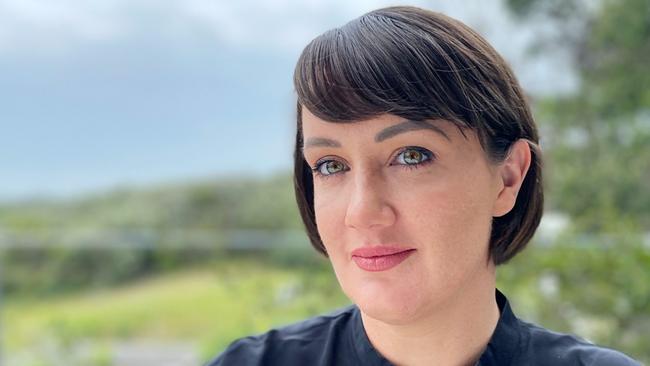The jobs that come with a higher suicide risk
Do high-risk jobs attract people who are then more vulnerable to stress, depression and suicide?

Veterinarians, paramedics, firefighters, farmers, construction workers, entertainers, artists and transport employees are at increased risk of suicide due to their occupation, a Monash University study has found.
The study, led by Dr Rosalind Case from Monash’s Paramedic Health and Wellbeing Unit, reviewed 60 studies between 2010 and January this year, and looked at occupational suicide rates and the efficacy of suicide prevention programs targeted to specific types of jobs.
The study found the risk of suicide is more prevalent in occupations where there is a high job demand, low autonomy or control, shift work, physical danger and access to lethal means of suicide such as guns. The authors say certain personalities may be drawn to high risk jobs, increasing their exposure to traumatic events and subsequent post-traumatic stress disorder, substance abuse and depression.
The suicide rate, for example, among veterinarians is twice as high than in other health disciplines, and four times higher than in the general population. Their increased access to lethal means is considered a reason for the higher rate, with 80 per cent of cases in Australia involving self-poisoning with a drug used to euthanise animals.
Case says in her experience as a psychologist, “one of the things that can contribute to distress, depression, anxiety is perfectionism, clinical perfectionism, which can often underlie a range of disorders and problems”.
“I think that some of these higher-functioning individuals who might have very high standards for themselves by virtue of the science or the practice that they are in, are very precise, and they may not have particularly great self-care skills,” she says.
“Some of the culture within veterinarian study programs, and the same with medicine, I think, can be quite toxic. They are exposed to really probably quite traumatic things in terms of distressed animals, having to put animals down.
“That’s probably not valued by people or not understood as an exposure to trauma and then they have access to literally a lethal injection.”
The authors say female medical doctors are more likely to commit suicide than their male counterparts, with self-poisoning the most common lethal means. Relationship problems are the most frequently noted life events prior to suicide in both groups.
The authors suggest that this discrepancy may “reflect gender role stress experienced by women in medical and nursing professions such as institutionalised barriers to career advancement, as well as additional pressure to undertake domestic labour and caregiving roles.”
Suicide risk is higher for nurses and midwives than those in other occupations. Male nurses and midwives are at particular risk, with “occupational gender norms and anxiety about perceived stigma … a potential risk factor for male nurses and midwives, due to the traditionally feminised characterisation of such roles,” the report says.
Case says the authors examined some interesting research around paramedics.
“There are particular personality aspects that might be associated with higher risk of suicidality and substance abuse, and one of those personality traits might be what we call impulsivity or sensation seeking,” she says.
“There is some evidence to suggest that individuals in kind of frontline critical care jobs, people who are attracted to working in those roles, are people who are sensation seeking so they might be people who might be slightly more impulsive.
“Again, it’s a very big generalisation but it just might be that you see a slightly increased proportion of the paramedic population being at risk.
“I think most paramedics would agree it’s a really hyper-masculine workforce and the research tends to indicate that those entrenched gender roles and hyper masculinity is potentially associated with maybe a lower likelihood of people engaging with their emotions, talking about their emotions, reaching out for help.
“That risk is higher for people of the other gender in a particular gender-dominated workforce so women in hyper-masculine fields, and a male nurse, for example … people are potentially a bit more isolated, the industry is set up and catered towards the opposite gender. Male nurses might experience a stigma for choosing a more feminine profession.”
The research about female doctors suggests there are “gender-related stressors that female doctors are often still trying to be the primary caregiver whereas male doctors tend to not be the primary caregiver.
“So you get all those normal high job demands but then you also get the additional stress of trying to balance those things and potentially women feeling a bit disenfranchised, for example, in medicine,” Case says.
“I certainly see that a lot myself among female doctors who I work with, a sense that they have to work so much harder to try to get entry and the things that their male colleagues might get access to in terms of their working opportunities just by virtue of being able to go out for a drink with the old boys.”
Farmers and agriculture workers have more access to lethal means. A study of suicide in Queensland farmers found that farmer suicide rates in the age group 34-55 years was far higher than in the same age group in non-farmers in that state. Workers in lower-skilled construction industry roles, such as machinists and labourers, had significantly higher suicide rates than skilled workers, with the risk of suicide among lower-skilled construction workers almost double that of other occupations.
UK studies have shown that artists, musicians, actors, entertainers and media presenters of both genders have a higher risk of suicide than the general population. An Australian study found that rates of suicide ideation, planning and attempts were six times increased for ideation, four times increased for planning and twice as likely in an attempt of suicide than those in the general population.
Case says researching occupational suicide rates was difficult “because how do you get accurate data about suicide in a timely fashion?”
“People are talking about what is the risk of suicide as a result of the lockdown and what we are experiencing at the moment,” she says.
“We can’t really know the full story for quite some time because a lot of the time these cases have to go to the coroner and the coroner could have a very long wait. People may not get to the coroner for a couple of years and it’s only at that point that data is going to be recorded as suicide.
“Or conversely, you might have a situation where the family believe it is a suicide but the coroner says they drove their car into a tree, not enough evidence to deem it a suicide. So it’s extremely difficult to get accurate data.”
The authors say there is an urgent need for high-quality evidence regarding the effectiveness of suicide prevention programs so targeted programs and interventions can provide the best chance of reducing suicide rates among workers. Monash University’s Professor Karen Smith, another lead study author, says while there are suicide prevention and intervention programs targeted at different occupations, “there is significant variation in the types of approaches that have been used, and little is known about the effectiveness of these programs.”
More than 3000 suicides were recorded in Australia in 2018, with an average age of 44.




To join the conversation, please log in. Don't have an account? Register
Join the conversation, you are commenting as Logout